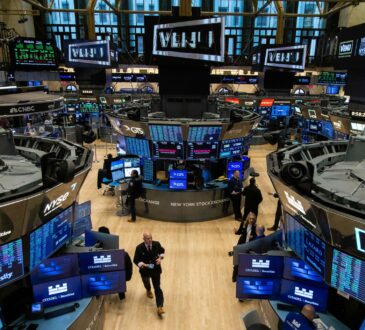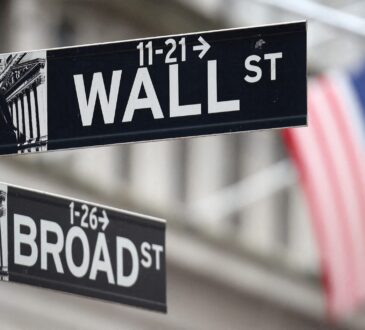
Wild cards await in the final months of the year after the Euro’s rally against the dollar through the past two quarters.
Between April and September, the euro strengthened against the US dollar, rising to 1.12 from 1.06. According to T. Rowe Price Chief European Economist Tomasz Wieladek, this development was driven by negative sentiment in the US.
“Stickier inflation and weak growth were already baked into market pricing in Europe. Subsequently, US labor market data have begun to cool and there has been a significant fall in oil prices. These factors enabled the Fed to cut 50bps in September and markets to price a large number of cuts until the end of 2025”, Wieladek says in an interview with Morningstar.
“Essentially, financial markets are pricing some chance of US recession in the next year, making it a story of dollar weakness rather than euro strength”.
For Claudio Wewel, FX Strategist at J. Safra Sarasin, “throughout the second half of 2023 and 2024, the EUR-USD exchange rate has more or less comoved with the yield of 10-year US Treasuries. US bond yields have fallen sharply over the past few months, providing fresh tailwinds for the euro.”
Could the Euro Continue Rising in Q4?
Now, however, the positions of the Federal Reserve and the ECB will have to be reckoned with. Both central banks have started their round of monetary easing, but the speed and decisiveness with which they will proceed is still up for debate.
Inflation is falling on both sides of the Atlantic, but the market expects the Fed to move a little more aggressively on the way down in rates, which closes the spreads a bit and leaves room for a stronger euro.
“Given that US rate expectations have repriced already to a significant extent, we do not think that the current state of the US economy warrants steeper rate cuts than what is already priced”, says Claudio Wewel. “Hence we do not think that there will be further euro tailwinds from the rate side. In our view, the market is more likely to refocus on relative cyclical dynamics, going forward, and these have remained weak in the euro area according to recent activity indicators. In our view, this suggests that EUR-USD should grind lower in the near term.”
To James Stanley, senior strategist at Forex.com, the EUR/USD seems overvalued. “I think the USD weakness that was rather profound in the first two months of Q3 was driven in-large by unwind in USD/JPY, which helped to buoy EUR/USD,” Stanley writes in an analysis on 2 October.
1.12 is historically a high level and in fact the euro does not seem to have much room to grow against the dollar from here on. Commerzbank analysts, for example, expect the euro to be at $1.11 by the end of the year and BofA predicts $1.12 by the end of the year.
“Consensus is building rapidly around an October ECB rate cut”, writes Francesco Pesole, FX strategist at ING in a note published on October 3. “The euro can no longer count on a supportive short-term rate differential, and a EUR/USD 2-year swap rate gap at -110bp is consistent with EUR/USD back at 1.100, or slightly below that”, he says.
What Trump or Harris Would Mean for the Dollar
According to Tomasz Wieladek, “the elephant in the room for a future EUR/USD level really is the US Presidential election”, as “At the moment, there is a large degree of economic policy uncertainty about the future US trade policy”. Donald Trump’s policies, for example, include an increase in duties and a decrease in taxes, which would probably lead to an increase in inflation and consequently a strengthening of the dollar as the Fed keeps borrowing costs higher.
“My prediction,” says the chief economist at T. Rowe Price, “is that if President Trump gets elected, EUR/USD will likely settle at 1.05. On the other hand, in case of a Harris victory, we will settle at 1.15”.
The Consequences of A Stronger or Weaker Euro
A stronger euro could hurt Europe’s main industries, all of which rely on exports. This is especially the case for the automotive industry, which also faces very strong competitive pressure from China. However, a stronger euro also makes consumers better off and raises their disposable income.
In such a scenario, according to Wieladek, “investors should focus on firms which are domestically orientated and focus on consumers”.
That said, Wewel is sceptical about such a scenario: “The euro probably won’t experience growth tailwinds from the FX side in 2025. On the other hand, we expect the EUR-USD trajectory to be rather flattish, such that the exchange rate should be of a lesser concern. According to our forecasts, most developed countries will experience higher growth than the euro area in the coming year”.
How to Hedge Against Currency Risk
Movements of the euro against other currencies have a clear effect on assets held by eurozone investors and denominated in foreign currencies– just as they speculatively do on euro-denominated assets held by investors outside the eurozone. In most cases, currency movements and returns are positively correlated, so currency risk usually increases volatility.
Basically, if the foreign currency appreciates against the local currency, the effect will be positive, as assets denominated in the other currency will only gain in value due to the buoyancy of the Forex market. Conversely, if the local currency were to strengthen, this alone would have a negative effect on foreign assets.
Obviously, the calculation becomes even more complex when assets denominated in different foreign currencies are included in the same basket, as is the case with global equity funds.
For those who want to avoid having to account for currency movements in their investments, an increasing number of mutual funds and ETFs offer a hedged share class, which aims to minimize the currency risk on final returns.
Hedging is never perfect, and as the following table shows, hedged and foreign-currency performance can deviate. That’s partly because hedged fund classes charge higher commissions. For most retail investors, the unhedged option remains perhaps the easiest way, especially when one has a long-term horizon and in the case of global funds where there are many underlying currencies potentially moving in different directions.



